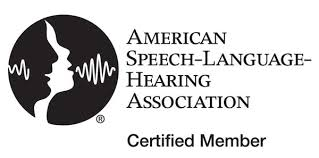Cleft Palate Speech Therapy
The Essentials
What is a Cleft Palate?
Along with cleft lip, it is the most common type of birth defect with Down Syndrome being the second most common.
Cleft palate speech therapy is given to most every person born with cleft lip or palate. We discuss this more below.
If you're looking for really technical infomation on cleft palate please refer to a medical website...
...we want this page to be easily understood.
A cleft is an abnormal opening in a part of your body that should be closed.
Explore Our Goal Achieving, Client Centered Products
For our discussion we are referring to an abnormal opening in the front roof of the mouth (hard palate), back roof of the mouth (soft palate) and/or lip (typically upper lip).
Clefts are certainly not limited to these two areas.
Cleft palate and/or lip are something people are usually born with. They can be acquired after birth from trauma or disease.
A person who is born with it can have the following:
- cleft lip only
- cleft palate only
- cleft lip and palate
- cleft uvula (little dangling thing in the back of your throat)
This is further subdivided into the categories of:
- unilateral - only on one side of the mouth (left or right)
- bilateral - on both sides
- median - this is rare but would look like a notch in the lip
- complete - from the uvula all the way to right behind the teeth (alveolar ridge)
- incomplete - from the uvula to any spot before the teeth (alveolar ridge)
- submucous - a cleft in the muscle above the front or back roof of the mouth that looks like a shadow not a hole.
Clefts occur in 1 of every 750 live births.
Cleft lip occurs twice as much in boys than girls.
Cleft lip and palate occurs twice as much in boys than girls.
Cleft palate only occurs twice as much in girls than boys.
Cleft lips are typically repaired early around 10-12 weeks and cleft palates are repaired between 6 and 18 months. Children often have follow up surgery for oral and nasal reconstruction.
The following shows how often clefts happen in some races:
- 1 / 1000 in Caucasians
- 2 / 1000 in Asians
- 4 / 10,000 in African Americans (very rare)
What is a Cleft Palate Disorder?
Cleft palate itself is not a disorder. As mentioned before it is simply an abnormal opening. Abnormal openings in parts of your mouth, however, can cause serious issues with someone's ability to make speech sounds.
As far as clear speech production goes, the biggest issue that Speech-Language Pathologists work with is hypernasality caused by velopharyngeal inadequacy.
This is when the most rear part of the soft palate (called the velum) will not reach far enough back in the throat to stop air from going through the nose (nasal cavity).
There are 3 types of velopharyngeal problems that usually warrant cleft palate speech therapy:
- velopharyngeal insufficiency - problem with mouth structures
- velopharyngeal incompetence - mouth structure movement problem
- velopharyngeal mislearning - articulation patterns developed incorrectly.
SEE ALSO: The Best Free App for Speech Therapy
If you have ever watched "The Nanny", Fran Drescher is a simulated version of someone with hypernasality.
A real example of hypernasality in a 5 year old boy can be seen here.
Or an example of hypernasality in a 17 year old girl with velo-cardio facial sydrome can be seen here.
She would be a perfect candidate for cleft palate speech therapy.
The opposite of hypernasality is hyponasality, when little to no air goes through the nose. If you have ever had a cold and been "stuffed up" you know what I'm talking about.
If you haven't, the next time you have a cold try and say an m, n, or ng sound.
It is impossible to say those sounds because air flow from the lungs is blocked from going through the nose by whatever "stuff" is in there.
What Causes It?
Before reading this, keep in mind that unless a pregnant woman purposefully exposes herself to harmful "things"...
...a parent does NOT cause a cleft.
Clefts happen during the 6th-10th week of development inside a mother's belly. During this time of development the baby's hard palate is separated, but comes together and fuses to form the roof of the mouth.
A cleft happens when something interrupts or gets in the way of the fusion.
So what gets in the way? We know of five main causes:
Chromosome Disorders - problem with the chromosome formation
Possible Examples:
- missing chromosomes
- extra chromosomes
- part of a chromosome is duplicated
Mechanically Induced - something blocks closure of the palate
Possible Examples:
- thumb sucking in the womb
- crowding from a twin
- tumor in the uterus
- abnormally shaped uterus
- crowding in the uterus
Teratogenic Influences - environmental things (less than 3% of cases)
Possible Examples:
- medical drugs (valium, cortisone)
- non-medical drugs (cocaine, alcohol, non-topical acne medicine)
- natural substances at poisonous levels
- radiation (from x-rays)
Syndromic Disorders
Possible Examples:
- Fetal Alcohol Syndrome (cleft palate)
- Hemi-Facial Microsomia (Goldenhar Syndrome) (lateral cleft)
- Oro-Facial-Digital Syndrome (Mohr Syndrome)
- Pierre Robin Syndrome
- Stickler Syndrome
- Treacher Collins Syndrome
- Van Der Woude Syndrome
What Does It Affect?
Almost all of our body parts are connected, especially around the mouth and head. When a cleft happens it affects other body parts and functions.
The following can be affected:
- Dentition - missing teeth, extra teeth, poor alignment, teeth that might not come out
- Nasal cavity - speech sounds nasal (hypernasal) because too much air goes through their nose, can have nasal emissions (when extra air escapes the nose) because the palate doesn't close all the way
- Articulation - difficulty making sounds in their mouth because teeth and mouth structures are different, air control is harder, resonance is affected
- Feeding - it can be hard to eat and drink with poor lip closure, a hole in the roof of your mouth, and/or missing/poorly aligned teeth
My brother-in-law had difficulty eating meats, chewy and sticky foods (peanut butter sandwiches, corn on the cob) until later in life when he got his teeth surgically repaired. - Hearing - a cleft may cause hearing loss which can affect learning speech sounds
- Voice - can be hoarse from making sounds in the wrong place
- Kissing - no, not really, there has been excellent research done in the area of surgical repair for individuals with cleft lip and palate. My brother-in-law was born with cleft lip and palate and he is happily married with 3 kids to his beautiful wife.
SEE ALSO: The Best Books for Speech Therapy Practice
What Does an SLP Do to Help?
Speech-Language Pathologists work with children who have cleft lip and/or palate to make speech as clear and as normal sounding as possible. In order to do this they must determine if a sound error is a:
- learned problem
- structural problem
- functional problem
SLPs use a variety of low and high technology tools that provide feedback to them in different ways.
- mirrors are used to help a child see air that comes out of their nose when it fogs up
- paper and tissues held under the nose show air coming out of it
- a device called a See-Scape is a vertical tube with a light weight ball in it that rises when air is blown into it through the nose from another flexible tube that a child puts near their nose
- flexible tubes or straws can be used to help the child hear extra sounds that come out of their noses
- a more high tech instrument is a nasometer which is a head gear device that places a sensor near the child's nose and records the extra air that comes out on a computer screen for the child to see
Each of the above examples help a child work on decreasing air that comes out of their noses.
Depending on the severity of the cleft, some children don't have the ability to produce sounds in the right place inside their mouth.
SLPs also teach children alternate places they can make speech sounds in their mouth when necessary.
What Can I Do About It?
First and foremost...be informed about the options for you child. Advances in cleft palate and lip repair give parents a lot of options. Some options will fit your child's needs better than others.
Research the characteristics of and find a qualified craniofacial team. You don't need to agree with everything they say and do everything they want.
Work with them as a team. Keep them informed and ask them to do the same for you.
Find a Speech-Language Pathologist with a background or specialization in cleft palate speech therapy.
Every stage of your child's development is crucial and an SLP will be there to help your child reach them.
If you live near a University that has a communication science/disorders program, they should have a treatment clinic. This will be a great resource for you.
They charge less for therapy than a private therapist would and they usually have access to the newest research and technology that will most help your child.
Resources We Like
The National Craniofacial Association - has detailed info. about 28 different disorders, along with support networks for families.
American Cleft Palate and Craniofacial Association (ACPA) - has general info. about clefts and syndromes, printable fact sheets, and offers publications and web resources for parents.
This website also helps you locate craniofacial teams in your state.
Cleft Advocate.org - info. and network about craniofacial teams.
American Society of Plastic Surgeons - info. about surgery and cleft repair.
Activities and Product Discounts, Oh My!
Sign up for Terrific Therapy Emails
Your information is 100% private & never shared.




























